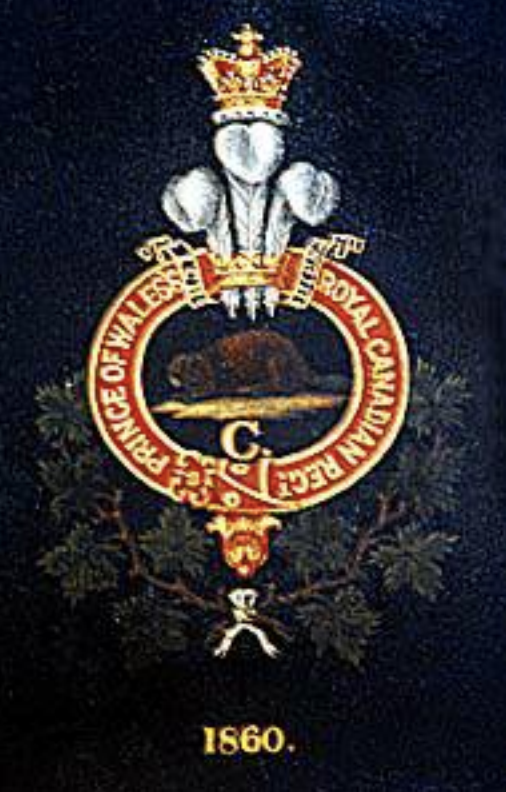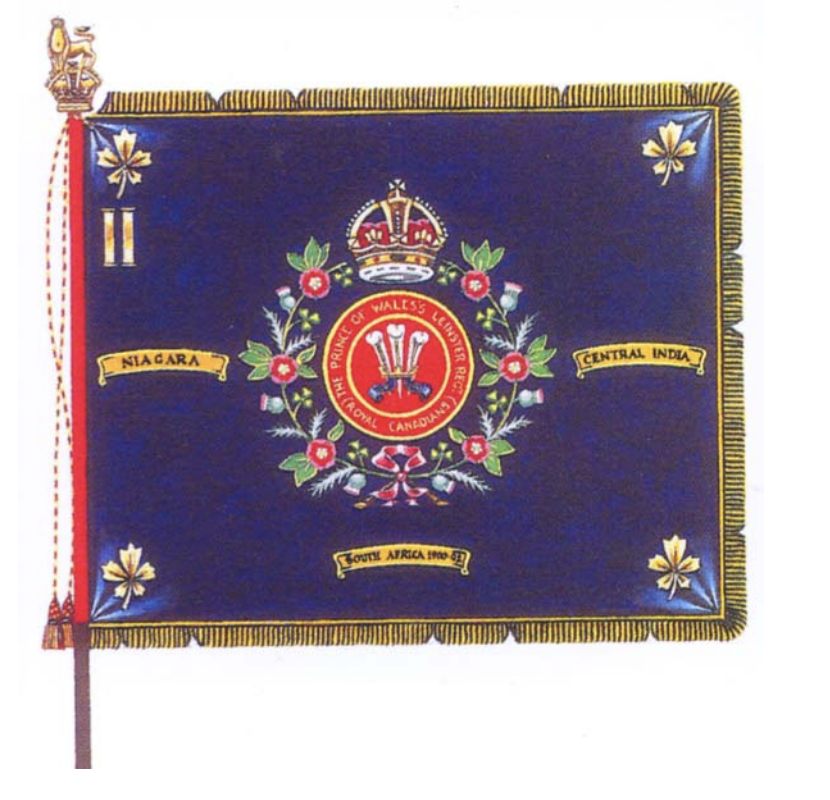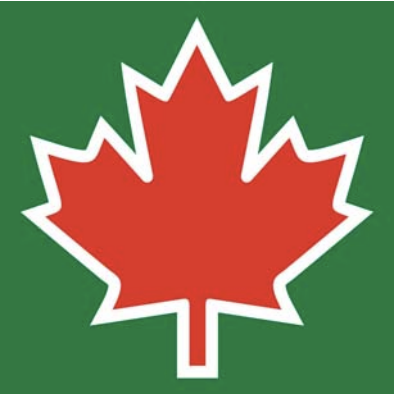The Canadian Origins and Associations of the 100th (Prince of Wales’s Royal Canadian) Regiment of Foot
and The Prince of Wales’s Leinster Regiment (Royal Canadians)

The Crimean War (1854-56) and the outbreak of the Indian Mutiny in 1857 gave rise to perceptions in Canada that there should be a Canadian contribution to imperial defence. Accordingly an infantry regiment was raised in Canada in 1858 for imperial service as a distinctively Canadian component of the British Army.
At this time the line infantry of the British Army comprised ninety-nine regiments; the new regiment thus took its place in the order of battle as the 100th (Prince of Wales’s Royal Canadian) Regiment of Foot. The Canadian officers and men were shipped to England during the summer of 1858 and the 100th Foot established itself at Shorncliffe. On 10 January 1859 HRH The Prince of Wales presented the regiment with its Colours.
Later in 1859 the regiment moved to Gibraltar, its strength at this time being 30 officers and 823 other ranks. The tour of garrison duty in Gibraltar lasted until 1863, the regiment then moving to Malta for similar employment. In 1866 the 100th returned to Canada, providing garrisons in Ottawa and Montreal. The regiment thus participated in the ceremonial inaugurating the Dominion of Canada on 1 July 1867; Dominion Day was thereafter celebrated as a regimental day.
By the time that the regiment sailed to the United Kingdom in 1868, its Canadian composition had been much diluted. Many of those who had enlisted in 1858 took their discharge in Canada on the completion of ten years with the Colours and the failure to 2 maintain a depot in Canada had made the regiment reliant on British recruits to keep it up to strength during its service in the Mediterranean. The strength of the 100th Foot when it left Canada in 1868 was 26 officers and 531 other ranks. The regimental history records that by 1872 the number of ‘original Royal Canadians’ had fallen to about 250.
During the 1870s an Irish identity was superimposed on the original Canadian identity of the 100th. Under a reform of the British regimental system, the 100th was linked with the 109th (Bombay Infantry) Regiment of Foot, which had been raised in 1853 as part of the forces of the Honourable East India Company and transferred to the British establishment after the Mutiny. The two regiments were allocated a common recruiting area in Ireland and in 1879 occupied a depot at Birr in King’s County (now County Offaly). These arrangements were consolidated in 1881 when the 100th and the 109th amalgamated to form The Prince of Wales’s Leinster Regiment (Royal Canadians), the 100th becoming the 1st Battalion and the 109th the 2nd Battalion.
The 2nd Battalion of The Leinster Regiment was posted to Halifax, Nova Scotia in 1897 and was relieved there the next year by the 1st Battalion. The arrival of the 1st Battalion seems to have been associated with the submission of a petition to the Governor-General of Canada in 1897 seeking the repatriation of The Royal Canadians. This idea came to nothing (both regular battalions of the regiment by this time having a distinct Irish identity) and the 1st Battalion left Halifax in 1900 under orders for South Africa.

Regimental Colour of the 2nd Battalion The Leinster Regiment (presented in 1906 and of similar design to Colours presented to the 1st Battalion in 1887 and 1913).
The Leinster Regiment did not forget its Canadian associations. The Regimental Colour carried by each battalion displayed maple leaf badges in the corners (a distinction granted to the 100th in 1858) and was emblazoned with the battle honour ‘Niagara’ (authorized for The 100th in 1875 in order to perpetuate the award of this honour to a previous incarnation of the 100th Foot for its services in 1813). When the 1st Battalion was presented with new 3 Colours in 1887, the old Colours of the 100th Foot (presented in 1859) were gifted to the Canadian Government and placed on display in the Library of Parliament in Ottawa. Maple leaves (rather than shamrocks) embellished regimental insignia and stationery and a red maple leaf was the prominent feature of the regimental flash that adorned the Wolseley helmet. Alliances were established with the 10th Royal Grenadiers and the 100th Winnipeg Grenadiers of the Canadian Militia.

Regimental flash worn on the Wolseley helmet. The above image is based on photographs taken during the 1919-22 tour of the 1st Battalion in India, but the configuration of the maple leaf has been slightly modified. The maple leaf represents The 100th Foot, the white edging represents The 109th Foot (whose tunics had white facings) and the green background.
The Leinster Regiment had a distinguished record of service in the Great War but was disbanded in 1922 along with four other Irish infantry regiments that recruited from the part of Ireland that became the Irish Free State in that year.

Mess plate of the 1st Battalion The Leinster Regiment (photographed in Madras in 1922 shortly before the battalion returned to the United Kingdom for disbandment).
Following the disbandment, the Mess plate of the 1st Battalion was handed over to the London representatives of the Canadian Government as a mark of affection for the country that had given birth to the 100th (Prince of Wales’s Royal Canadian) Regiment of Foot in 1858. HRH The Prince of Wales (who had been appointed Colonel-in-Chief of the regiment in 1919) conducted the handover ceremony. The plate is now in the care of the Royal Military College of Canada.
1922 was also the year in which a small fragment of the 1859 Regimental Colour of The 100th Foot was discovered hidden between some books on the shelves of the Library of Parliament in Ottawa. No record has been traced of how the two complete Colours placed on display in the Library some thirty-five years previously had deteriorated to this extent. The fragment now forms part of the collections of the Canadian War Museum.
